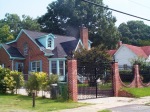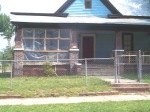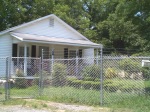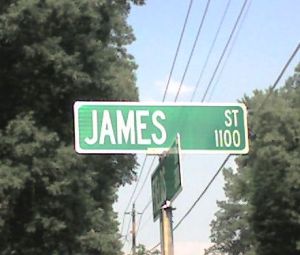The first “pocket parks” in Sanford are taking shape. City work crews are installing a special mulch, as an impact absorber, at the park located on Martin Street and Pineland Street. Equipment installation crews are finishing up the assembly process at the park located on Third Street and North Street.
It’s great to see this idea finally taking shape. The seed for the “pocket park” concept was planted at the National Congress of Cities Exposition, held in New Orleans, in 2007. On display there were several vendors with displays of recreational equipment, and illustrations of various parks of different sizes, located throughout our nation. This is when Council began seriously discussing the pros and cons of our city, and the roll it should play in parks and recreation.
In early 2005, then Ward 2 council member Cornelia Olive did discuss putting up a basketball goal at the Third Street location. Several neighbors had concerns that a basketball court at that location would not be a wise decision. The county Recreation Department had removed several goals from other areas for various reasons. The cost to resurface and prepare the court, etc. was also a deterrent. This idea never went any further, however it did make Council think just a little about the lack of parks in our city.
Years ago, the City and County agreed that the County would handle all the parks and recreation for Lee County. As the years passed, several parks were abandoned by the County and that property reverted back to the City. The City also acquired several small lots through FEMA buy outs, land gifts to the City, land transfers from the County, etc. For one reason or another, most of these lots may not be sold. The City leases out some of this property. The ones that are not leased are regularly maintained by the City.
The decision was made to invest in our neighborhoods with a series of small parks. These parks would be designed to accomodate younger children considered to be pre-teens. In early 2008, the City Council moved $75,000 from a curb project on Steele Street to fund the first two “pocket parks.” Additionally, several green space areas would receive park benches, etc. in other areas.
This will be a slow, learn as we go, process. Anallyzing all the pros and cons of the first parks, so we may improve, if need be, on future parks. Different areas may require a different concept. Some areas may need more, and others just a little. As with these first two parks, neighborhood imput will be very important. Investing more into nieghborhoods, and improving the quality of life in Sanford, is an important goal of City Council. Hopefully, this will be another step in the right direction.
If you have any questions, please call City Manager, Hal Hegwer at 919-775-8201 or Steve Brewer at 919-770-9587.








































Recent Comments